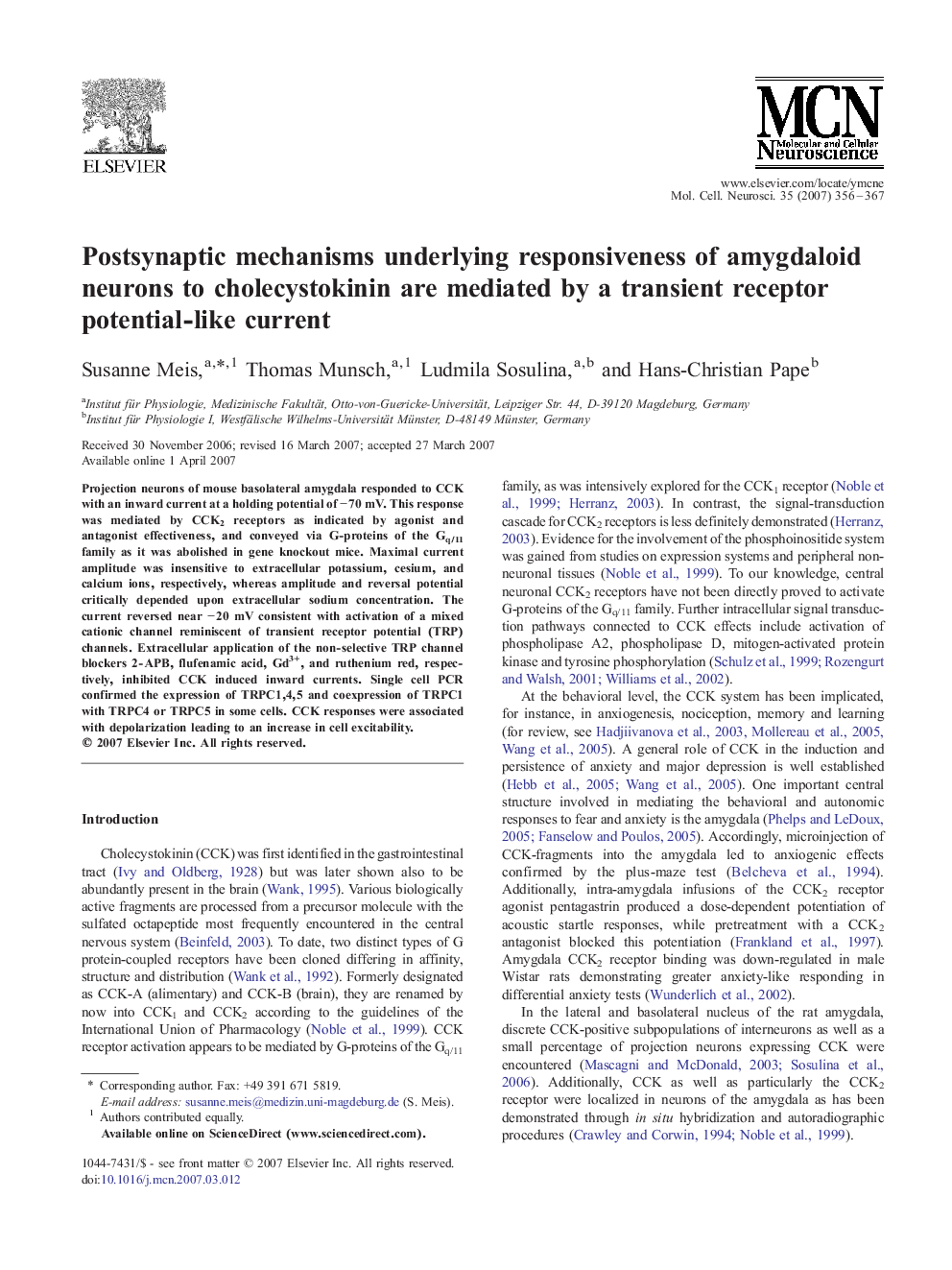| Article ID | Journal | Published Year | Pages | File Type |
|---|---|---|---|---|
| 2199410 | Molecular and Cellular Neuroscience | 2007 | 12 Pages |
Projection neurons of mouse basolateral amygdala responded to CCK with an inward current at a holding potential of − 70 mV. This response was mediated by CCK2 receptors as indicated by agonist and antagonist effectiveness, and conveyed via G-proteins of the Gq/11 family as it was abolished in gene knockout mice. Maximal current amplitude was insensitive to extracellular potassium, cesium, and calcium ions, respectively, whereas amplitude and reversal potential critically depended upon extracellular sodium concentration. The current reversed near − 20 mV consistent with activation of a mixed cationic channel reminiscent of transient receptor potential (TRP) channels. Extracellular application of the non-selective TRP channel blockers 2-APB, flufenamic acid, Gd3+, and ruthenium red, respectively, inhibited CCK induced inward currents. Single cell PCR confirmed the expression of TRPC1,4,5 and coexpression of TRPC1 with TRPC4 or TRPC5 in some cells. CCK responses were associated with depolarization leading to an increase in cell excitability.
